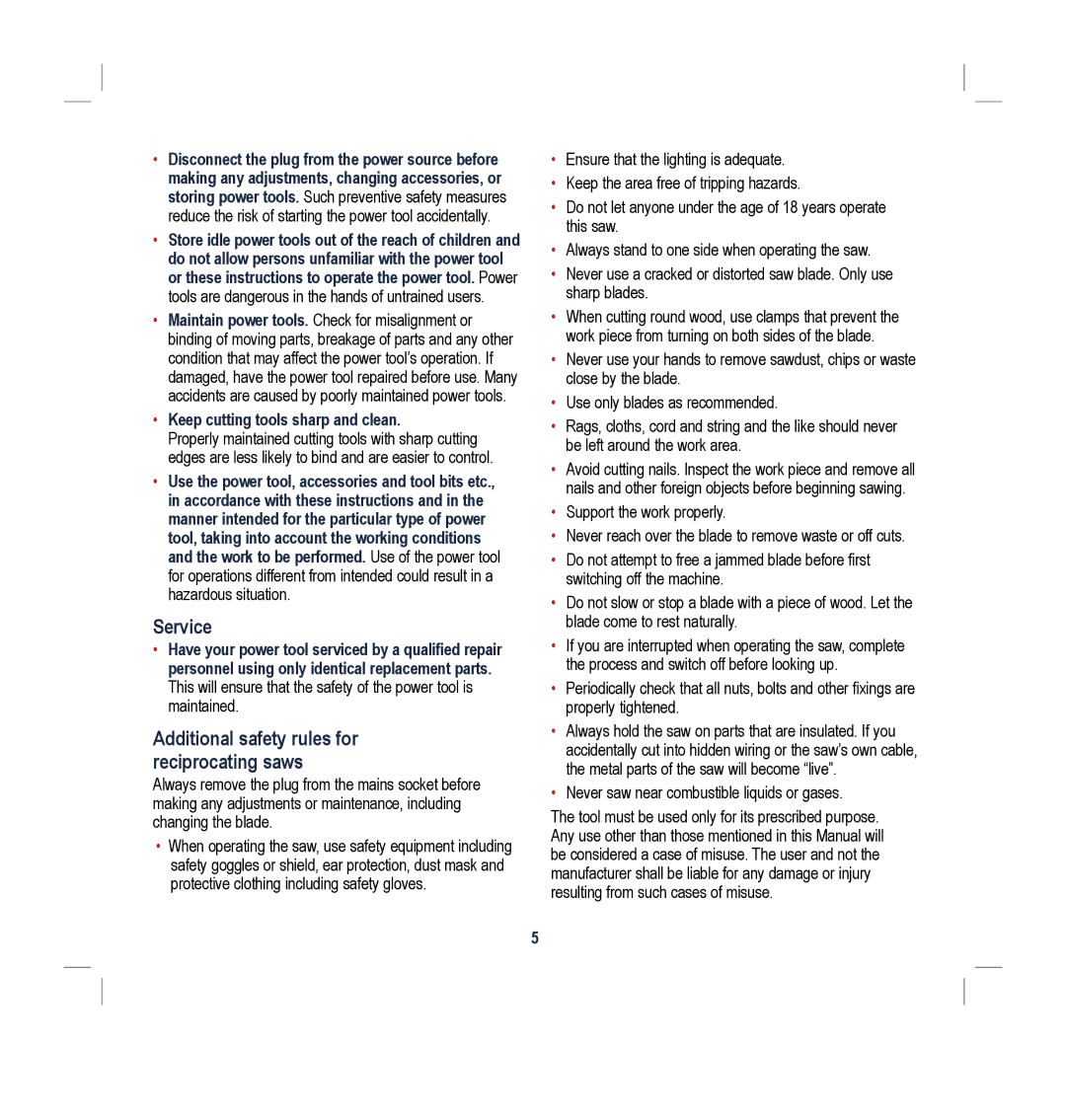
•Disconnect the plug from the power source before making any adjustments, changing accessories, or storing power tools. Such preventive safety measures reduce the risk of starting the power tool accidentally.
•Store idle power tools out of the reach of children and do not allow persons unfamiliar with the power tool or these instructions to operate the power tool. Power tools are dangerous in the hands of untrained users.
•Maintain power tools. Check for misalignment or binding of moving parts, breakage of parts and any other condition that may affect the power tool’s operation. If damaged, have the power tool repaired before use. Many accidents are caused by poorly maintained power tools.
•Keep cutting tools sharp and clean.
Properly maintained cutting tools with sharp cutting edges are less likely to bind and are easier to control.
•Use the power tool, accessories and tool bits etc., in accordance with these instructions and in the manner intended for the particular type of power tool, taking into account the working conditions and the work to be performed. Use of the power tool for operations different from intended could result in a hazardous situation.
Service
•Have your power tool serviced by a qualified repair personnel using only identical replacement parts. This will ensure that the safety of the power tool is maintained.
Additional safety rules for reciprocating saws
Always remove the plug from the mains socket before making any adjustments or maintenance, including changing the blade.
•When operating the saw, use safety equipment including safety goggles or shield, ear protection, dust mask and protective clothing including safety gloves.
•Ensure that the lighting is adequate.
•Keep the area free of tripping hazards.
•Do not let anyone under the age of 18 years operate this saw.
•Always stand to one side when operating the saw.
•Never use a cracked or distorted saw blade. Only use sharp blades.
•When cutting round wood, use clamps that prevent the work piece from turning on both sides of the blade.
•Never use your hands to remove sawdust, chips or waste close by the blade.
•Use only blades as recommended.
•Rags, cloths, cord and string and the like should never be left around the work area.
•Avoid cutting nails. Inspect the work piece and remove all nails and other foreign objects before beginning sawing.
•Support the work properly.
•Never reach over the blade to remove waste or off cuts.
•Do not attempt to free a jammed blade before first switching off the machine.
•Do not slow or stop a blade with a piece of wood. Let the blade come to rest naturally.
•If you are interrupted when operating the saw, complete the process and switch off before looking up.
•Periodically check that all nuts, bolts and other fixings are properly tightened.
•Always hold the saw on parts that are insulated. If you accidentally cut into hidden wiring or the saw’s own cable, the metal parts of the saw will become “live”.
•Never saw near combustible liquids or gases.
The tool must be used only for its prescribed purpose. Any use other than those mentioned in this Manual will be considered a case of misuse. The user and not the manufacturer shall be liable for any damage or injury resulting from such cases of misuse.
5
